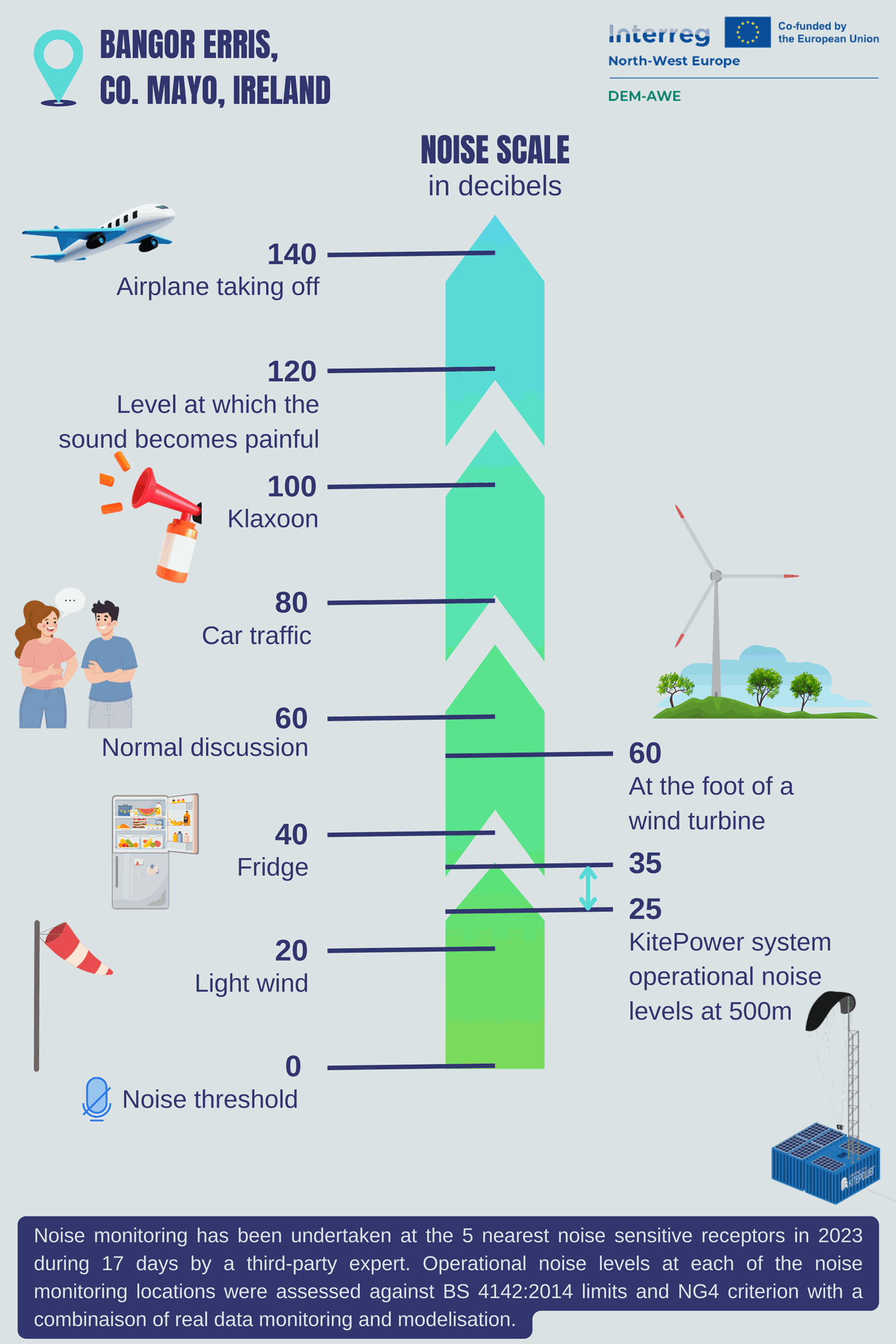In 2023, Bangor Erris, Co. Mayo, Ireland, became the home of a testing ground for assessing Kitepower systems. Among the key focus areas, was noise monitoring, an important consideration for integrating renewable energy solutions into communities.
The results, depicted in the noise scale illustration, shows that:
- At 500 meters, the operational noise level of the Kitepower system measured between 25 to 35 decibels — comparable to the sound of wind in the leaves, in a bedroom or a quiet office;
- For comparison, a fridge typically emits around 40 decibels, while normal conversation averages 60 decibels;
- Standing at 500 meters from a traditional wind turbine reaches between 30 to 40 decibels, a bit louder than AWES.

How was this measured?
Noise assessments were conducted over 17 days at five of the nearest noise-sensitive receptor sites. The measurements and study were realised by a third-party expert with a combination of real-world data monitoring and modelling to ensure the best accuracy possible. The measurements adhered to BS 4142:2014 standards (method for rating and assessing industrial and commercial sound) and NG4 criteria, ensuring compliance with regulatory frameworks.
Why does this matter?
Noise pollution is a common concern for renewable energy projects. These findings demonstrate that AWE systems, such as Kitepower, can operate at levels far below common environmental noise sources, making them a community-friendly solution for sustainable energy. It should also be noted that the DEM-AWE team continue working on improving the Kitepower system, and sound emission is always taken into consideration during the design phases.
As we work toward transitioning to clean energy, this type of data showcases the potential of innovative technologies like AWE to meet energy demands while minimizing environmental and social impacts on the local population.